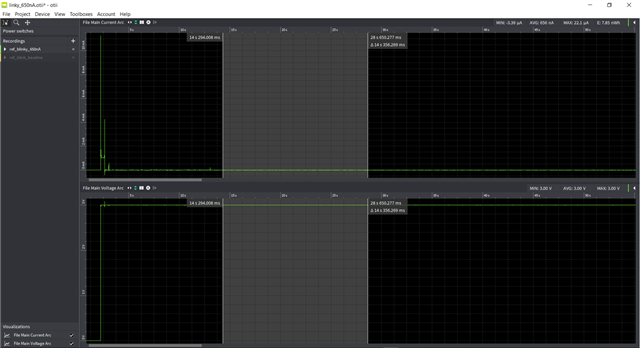Hi,
We are working on BLE MESH using nRF52840. We are trying to put nRF52840 into deep sleep mode. The deep sleep current is about 210 micro Amp. Further, the current is continuously increasing approx. by 1 micro Amp after every 60 sec.
My setup:
nRF SDK ver : nRF5_SDK_17.0.2_d674dde
BLE MESH ver : nrf5_SDK_for_Mesh_v5.0.0
Hardware : BT840 based custom board
The functions used for putting the nRF52840 into deep sleep -nrf_mesh_disable()nrf_pwr_mgmt_shutdown(NRF_PWR_MGMT_SHUTDOWN_STAY_IN_SYSOFF);
We also tried sd_power_system_off() but result are no better.
We are able to achieve deep sleep current of 500 nano Amp on same hardware, using Thread protocol. We are not sure how to achieve it using BLE Mesh.
It would be a great help if you could suggest a solution or give us a direction.
Kind Regards,
Rajendra




